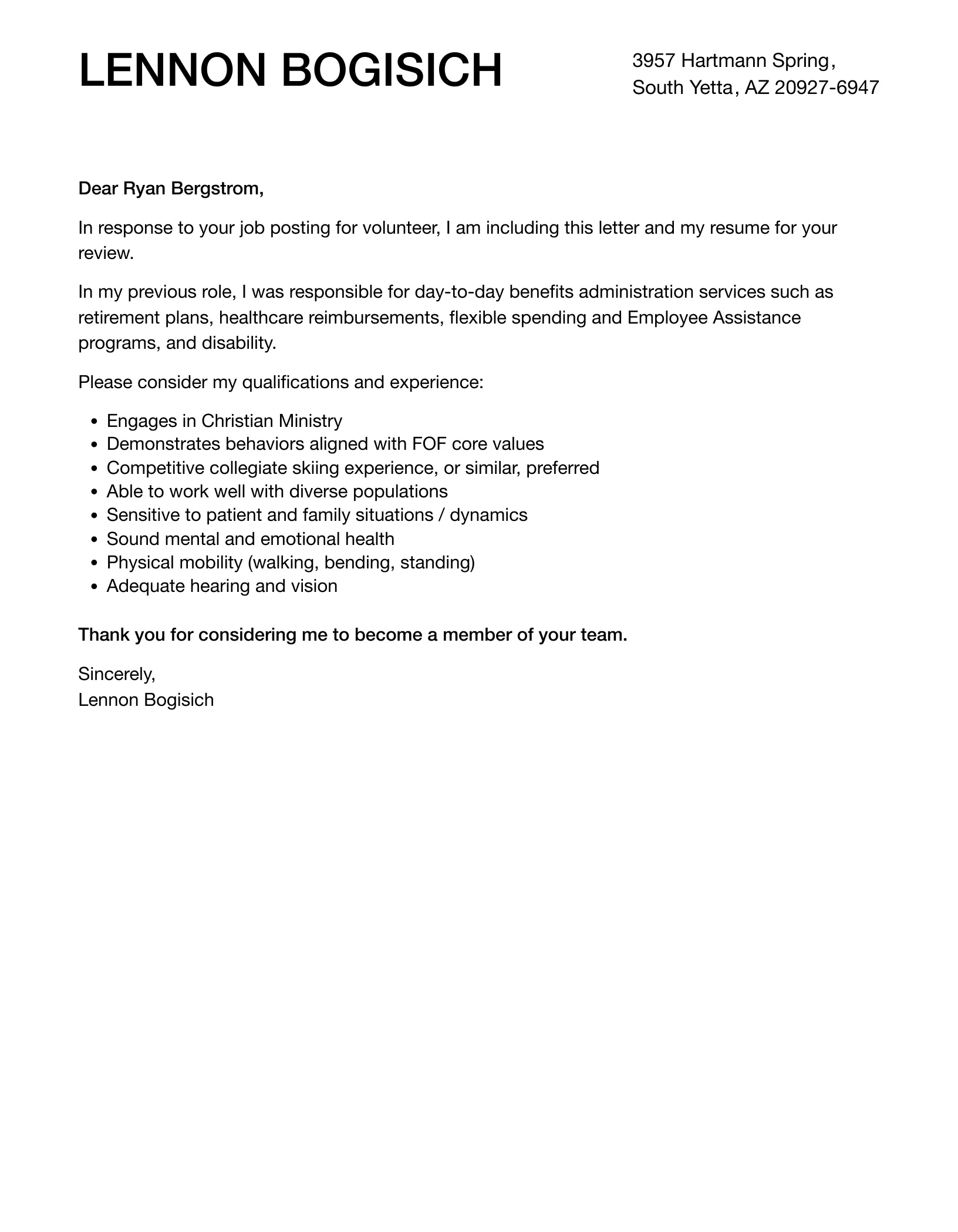Understanding the Volunteer Cover Letter
A volunteer cover letter is a crucial document when applying for volunteer positions. It serves as your introduction to the organization and allows you to express your interest, qualifications, and motivations for volunteering. Unlike a resume, the cover letter gives you the space to elaborate on why you are a suitable candidate and how your skills and experiences align with the organization’s mission. A well-crafted cover letter can significantly increase your chances of being selected for a volunteer role and making a positive impact. It also demonstrates your communication skills and your genuine interest in supporting the organization’s cause.
The Purpose of a Volunteer Cover Letter
The primary purpose of a volunteer cover letter is to showcase your interest in the volunteer position and explain why you’re a good fit. It allows you to communicate your passion for the cause, highlight relevant skills, and demonstrate your commitment to the organization’s mission. The letter provides an opportunity to tell your story, making a personal connection with the reader. By clearly articulating your goals and motivations, you help the organization understand how your volunteer work can benefit both the community and yourself. It also provides an easy way to determine if the applicant is really serious to take the volunteer position.
Key Components to Include
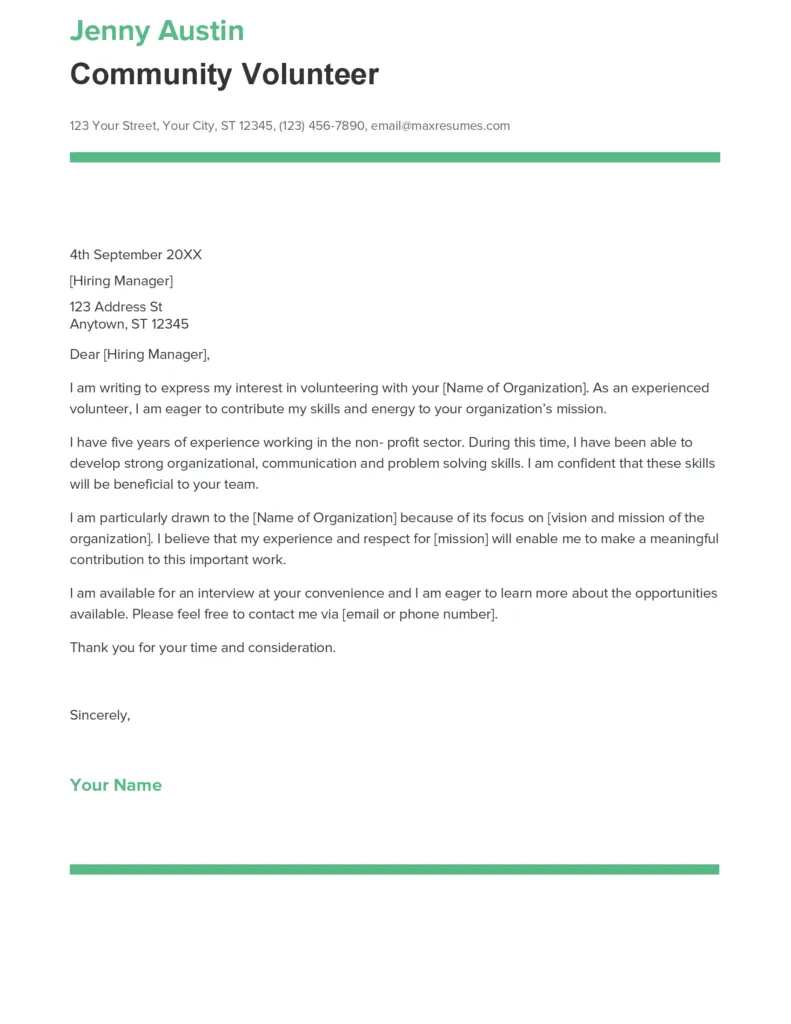
A strong volunteer cover letter includes several key components. These elements work together to present a complete picture of you as a potential volunteer. Including each of the below elements are crucial to demonstrate your interest and qualify for the volunteer position.
Contact Information and Date
Start with your full contact information (name, address, phone number, email) at the top left or right of the letter. Include the date below your information, showing when the letter was written. This provides easy access for the organization to reach you.
Personalized Salutation
Address the letter to a specific person if possible (e.g., ‘Dear Mr./Ms. [Last Name]’). Research the organization to find the appropriate contact person. This shows that you have taken the time to personalize your letter and are genuinely interested in volunteering with that specific organization.
Stating Your Intention
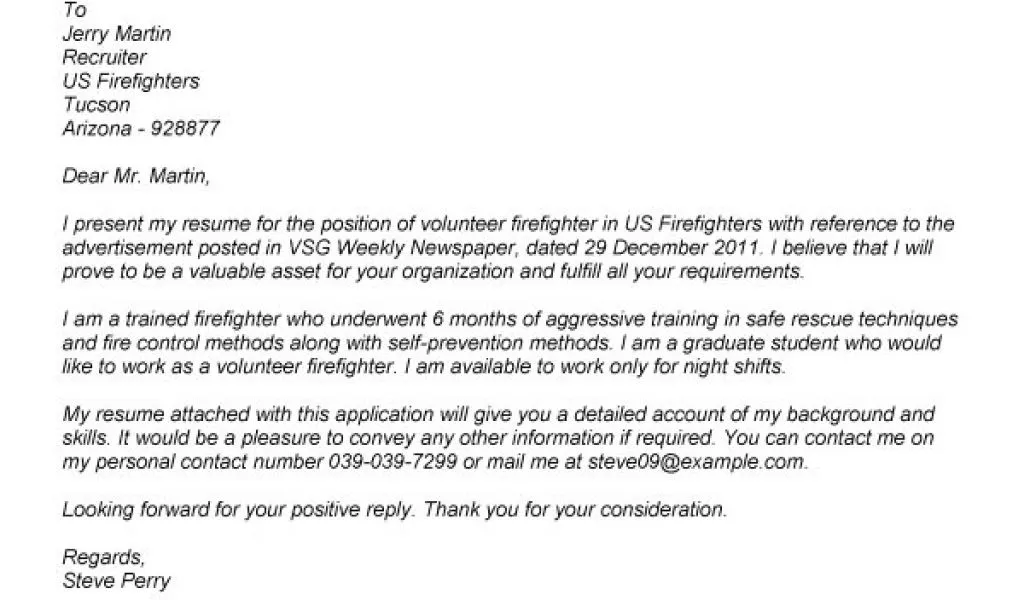
Clearly state the volunteer position you are applying for and where you found the information. This immediately clarifies your purpose and ensures the reader knows what you are seeking. Be direct and concise, making it easy for the reader to understand your intentions.
Highlighting Relevant Skills and Experience
Focus on the skills and experiences that align with the volunteer role. Mention any relevant training, previous volunteer work, or professional experience that could be beneficial to the organization. This helps to demonstrate your suitability for the position and how you can contribute to their mission. Use the keyword for this section to help the reader understand you are the right candidate for this position.
Showcasing Your Passion for the Cause
Express your enthusiasm for the organization’s mission and explain why you are passionate about their cause. This helps the reader understand your motivation and commitment. Share any personal connections or experiences that have inspired you to volunteer. Authenticity can make a big difference, making your cover letter stand out.
Quantifying Your Achievements
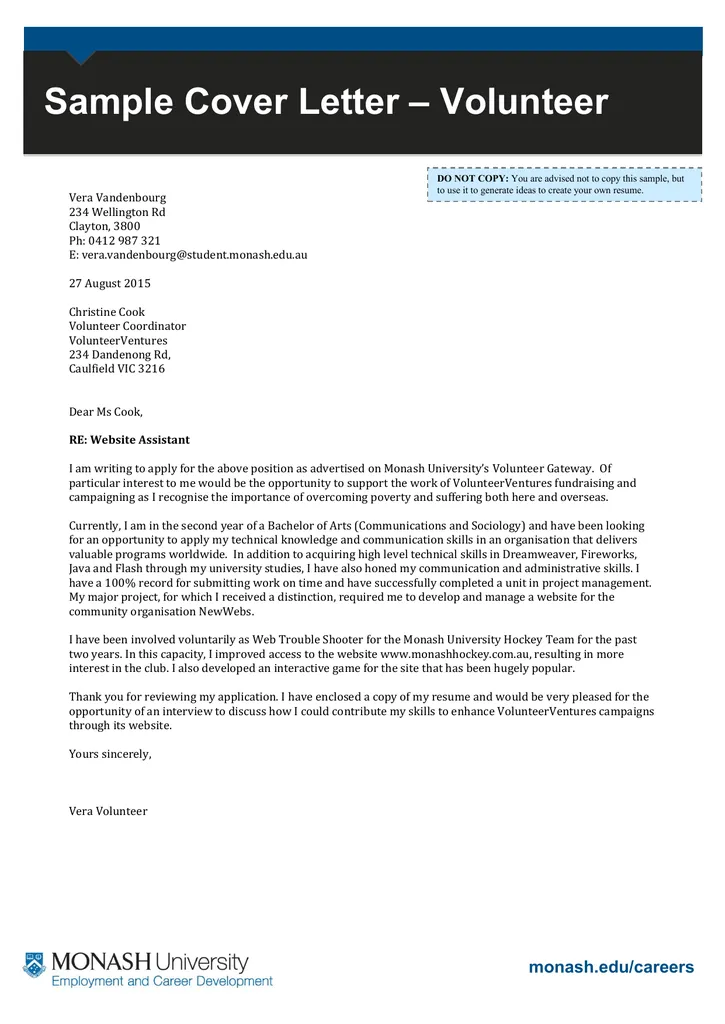
Whenever possible, quantify your achievements and contributions in your past experiences. Instead of saying ‘I helped with fundraising’, state ‘I helped raise $5,000 through successful fundraising events’. Use numbers to demonstrate your impact and show the value you can bring to the organization. Quantifiable data is usually more impactful than general statements.
Expressing Your Availability
Specify your availability for volunteering, including the days, times, and frequency you can commit. This helps the organization determine if your schedule aligns with their needs. Be realistic about your availability to ensure you can fulfill your commitments. If your schedule is flexible, be sure to mention that also.
Thank You and Call to Action
Thank the reader for their time and consideration. End the letter by expressing your eagerness to hear from them and including a call to action, such as suggesting a follow-up. Provide your contact information again at the end for convenience. This shows your courtesy and increases the likelihood of a response.
Formatting Your Cover Letter
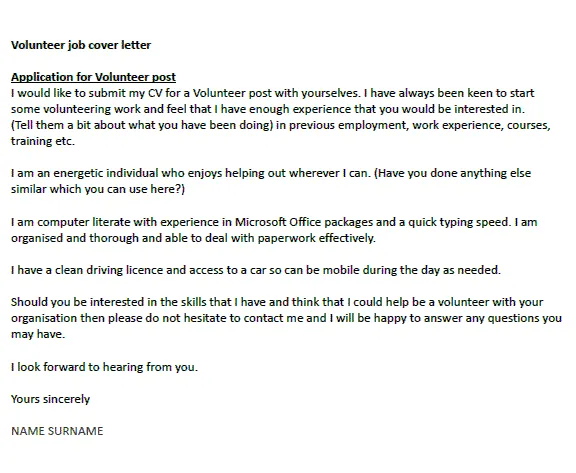
Proper formatting makes your cover letter easy to read and professional. Use these guidelines for formatting to ensure the best impression on the reader.
Choosing the Right Font and Size
Select a clear and professional font, such as Times New Roman, Arial, or Calibri, with a font size between 10 and 12 points. Avoid overly stylized fonts that are difficult to read. The goal is to make the letter as easy to read as possible.
Proper Use of Paragraphs and Spacing
Use short, concise paragraphs to make the letter visually appealing. Leave a space between each paragraph for readability. Use a consistent format throughout the letter. Avoid long blocks of text, which can be overwhelming.
Proofreading and Editing
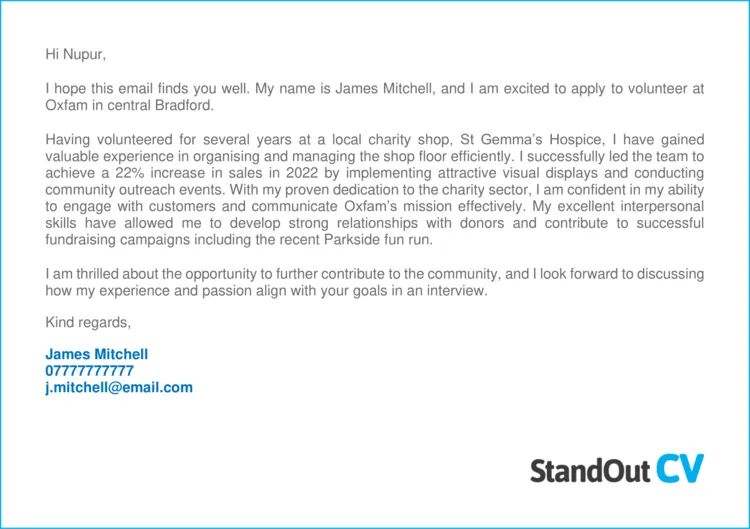
Thoroughly proofread your cover letter for any typos, grammatical errors, or inconsistencies. Use a grammar checker and have someone else review it for you. A well-edited letter demonstrates attention to detail and professionalism. Correct spelling and grammar are important for a positive impression.
Common Mistakes to Avoid
Avoiding common mistakes is crucial for writing a compelling volunteer cover letter. By preventing these errors, you will be able to improve your application and increase the likelihood that you are accepted for the volunteer position.
Generic Language and Lack of Personalization
Avoid using generic language that could apply to any organization. Tailor your letter to the specific organization and position. Research the organization’s mission, values, and programs to show that you understand what they do. Personalize the letter by mentioning specific programs or initiatives that interest you. Generic content means that the volunteer is not really interested in the position.
Focusing Solely on Yourself
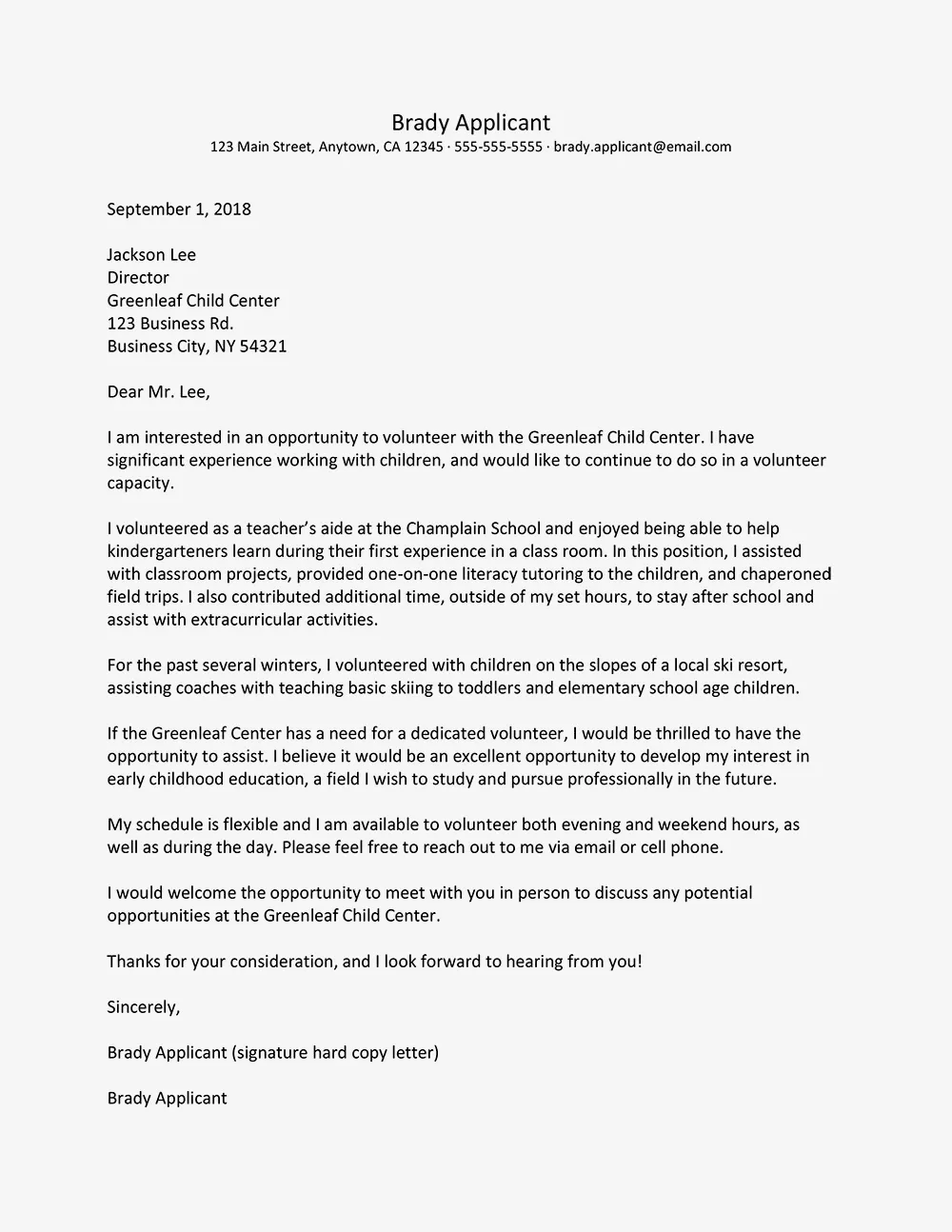
While it’s important to highlight your skills and experiences, avoid making the letter all about you. Focus on how your contributions can benefit the organization and its mission. Mention your understanding of the organization’s goals, and show how you want to help. Show how your skills and passion align with the organization’s needs. Make sure to balance self-promotion with a focus on the organization.
Typos and Grammatical Errors
Always proofread your cover letter carefully. Typos and grammatical errors can detract from your professionalism and make a bad impression. Use a grammar checker, and have someone else review the letter before submitting it. Careful proofreading reflects your attention to detail and commitment.
Using the Cover Letter Template
Templates can be a great starting point for your volunteer cover letter, but tailoring the template is vital. Here’s how to make the most of them.
Tailoring the Letter to Each Organization
Customize your cover letter to match the specific requirements and mission of each organization you apply to. Avoid sending the same generic letter to multiple organizations. Show that you have researched the organization and understand their work. This level of personalization is key to making a strong impression. Tailoring shows the volunteer’s understanding of the organization and its values.
Researching the Organization’s Mission
Thoroughly research the organization’s mission, values, and programs. Visit their website, read their annual reports, and explore their social media. Understanding the organization’s goals will help you align your cover letter with their specific needs. Use this research to highlight your interest and demonstrate your commitment to their cause. Understanding of the organization is the most important element in applying for any volunteer position.
Matching Your Skills to Their Needs
Carefully review the volunteer position description and identify the skills and experiences the organization is looking for. Highlight the relevant skills and experiences you possess. Provide examples of how you have used these skills in the past. By matching your skills to their needs, you can show the organization that you are a good fit. If you have some skills that are not related to the position, you can choose not to mention them.
Examples and Templates
Reviewing examples and using templates can provide you with a strong starting point. You can then adapt the example and template to fit your personal situation and the specific volunteer position. Here are some examples to help you.
Volunteer Cover Letter Example
This section provides a sample cover letter. Remember to modify the content to reflect your own experience and the organization’s specific requirements. This example can be used as a foundation. Replace the information to match the position that you are seeking. You can then create a unique cover letter that is personalized to the volunteer position.
Volunteer Cover Letter Template
This section provides a template that you can use to guide your writing. The template includes sections for your contact information, a personalized greeting, an introduction, a skills and experience section, a statement of passion, and a conclusion. Fill in the template and be sure to customize the template to match your experience and the requirements of the specific volunteer role.
